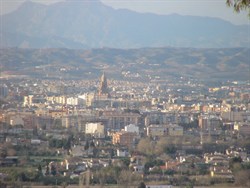The history of the city of Murcia between the Middle Ages and the Early Modern Period
 In 1520, the city of Murcia joined the revolt of the comuneros, which endangered the power of the young King Charles I. Under Philip II, troops from Murcia and guided by the Marquis of los Vélez helped to tame the second revolt of the Alpujarras. The resulting dispersion of the community of the Moriscos of Granada caused the crisis in the flourishing silk industry of the Andalusian town, allowing silk from Murcia to establish itself as the new leader of the market. The expulsion of the Moriscos from all over the Iberian territory, determined by Philip III in 1609, affected the silk industry of Murcia in a similar way to what happened decades ago in Granada. The economic crisis that affected the whole of Castile in the seventeenth century did not leave Murcia immune and it was also hard hit by the epidemic of the plague in 1648 and some natural events, such as the flooding of the Segura river in 1651. In the early eighteenth century, the city played a major role in the War of the Spanish Succession (1701-1713). Besieged by the pro-Austrian forces, Murcia resisted the attack, assisting in the final victory of the Bourbons.
In 1520, the city of Murcia joined the revolt of the comuneros, which endangered the power of the young King Charles I. Under Philip II, troops from Murcia and guided by the Marquis of los Vélez helped to tame the second revolt of the Alpujarras. The resulting dispersion of the community of the Moriscos of Granada caused the crisis in the flourishing silk industry of the Andalusian town, allowing silk from Murcia to establish itself as the new leader of the market. The expulsion of the Moriscos from all over the Iberian territory, determined by Philip III in 1609, affected the silk industry of Murcia in a similar way to what happened decades ago in Granada. The economic crisis that affected the whole of Castile in the seventeenth century did not leave Murcia immune and it was also hard hit by the epidemic of the plague in 1648 and some natural events, such as the flooding of the Segura river in 1651. In the early eighteenth century, the city played a major role in the War of the Spanish Succession (1701-1713). Besieged by the pro-Austrian forces, Murcia resisted the attack, assisting in the final victory of the Bourbons.
